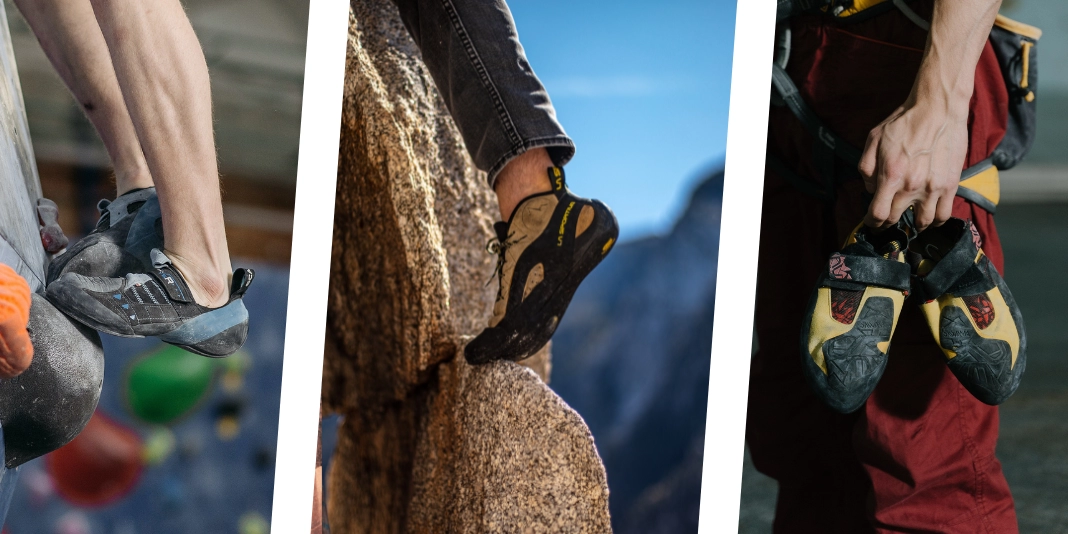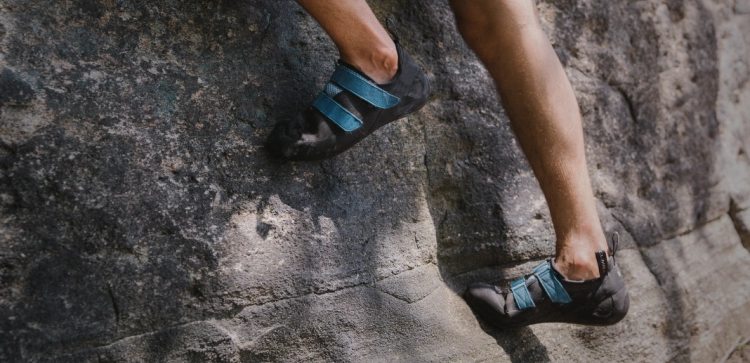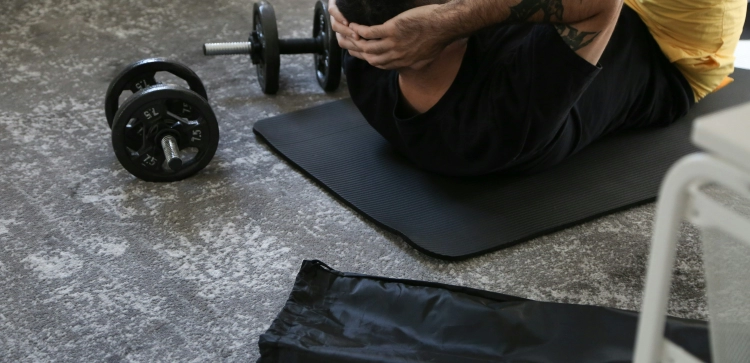The Different Types Of Climbing Shoes And Their Uses: A Comprehensive Guide

If you're a climber, you know that having the right gear can make all the difference in sending the route or not, and in your general climbing experience. With shoes being one of the most important pieces of climbing gear, if not the most, it's understandable that there will be a very wide variety of climbing shoes to choose from. But with so many different types and styles of climbing shoes on the market, it can be overwhelming and hard to know which ones to choose.
In this guide, we'll take a closer look at the different types of climbing shoes and the climbing styles they are typically used for so that you can make educated decisions, rather than just listening to what others might say, and find the perfect pair for you.
- Understanding The Types Of Climbing Shoes: A Beginner's Guide
- The Anatomy Of A Climbing Shoe: Parts And Features
- Bouldering Shoes: What Makes Them Different And Why You Need Them
- Sport Climbing Shoes: How They Differ From Other Climbing Shoes
- Trad Climbing Shoes: What Makes Them Unique And Why You Might Need Them
- Choosing The Right Climbing Shoes For Your Needs
- Conclusion
Understanding the Types of Climbing Shoes: A Beginner's Guide
Before we get into the different types of climbing shoes, let's start with the basics. What exactly are climbing shoes, and why are they important?
Simply put, climbing shoes are specialized footwear designed for use in rock climbing, both indoors and outdoors. Unlike regular shoes, climbing shoes have a minimalistic design to provide maximum traction and grip on a variety of surfaces, from smooth slabs to steep overhangs.
But climbing shoes aren't just about grip. They're also designed to provide the right balance of support and flexibility, allowing you to make precise foot placements and maintain your balance on the rock.
The anatomy of a climbing shoe: Parts and features
To better understand climbing shoes, it's helpful to know the different parts and features that make up a typical climbing shoe. Here are some of the most important ones to know:
- Sole: The sole of a climbing shoe is the part that comes into contact with the rock. Climbing shoe soles are made from specialized rubber compounds that provide excellent friction and durability.
- Upper: The upper is the part of the shoe that covers the top of your foot. Climbing shoe uppers can be made from a variety of materials, including leather, synthetic fabrics, and mesh.
- Toe box: The toe box is the front part of the shoe that covers your toes. Climbing shoes can have different toe box shapes, from flat to downturned, depending on the type of climbing they're designed for.
- Heel cup: The heel cup is the part of the shoe that covers your heel. A well-designed heel cup should fit snugly and securely, providing support and preventing your foot from slipping out of the shoe.
Different types of climbing shoes and how they differ
Now that we've covered the basics of climbing shoe anatomy, let's take a closer look at the different types of climbing shoes available.
Bouldering Shoes: What Makes Them Different and Why You Need Them
Bouldering is a style of rock climbing that involves short, powerful climbs on boulders or small rock formations. Because bouldering often involves steep, overhanging terrain, bouldering shoes are designed with a downturned toe and sticky rubber sole for maximum grip and precision.
Some key features of bouldering shoes include:
- A downturned toe: This shape allows your foot to grip onto small edges and hold more easily.
- Sticky rubber sole: The rubber compound used in bouldering shoes is softer than other types of climbing shoes, providing maximum friction and grip on even the smallest holds.
- Minimalist design: Bouldering shoes are typically designed to be lightweight and low-profile, allowing you to feel the rock beneath your feet and make precise foot placements.
- Velcro closure: Bouldering shoes typically have a Velcro closure, allowing for easy adjustments, and allowing your feet to rest in between routes by taking your shoes off.
Sport Climbing Shoes: How They Differ from Other Climbing Shoes
Sport climbing is a style of climbing that involves climbing on pre-placed bolts or protection. Because sport climbing often involves steep and technical terrain, sport climbing shoes are designed for precision and sensitivity.
Some key features of sport climbing shoes include:
- A downturned or flat toe: Depending on the style of climbing you're doing, sport climbing shoes can have either a downturned or flat toe. Downturned toes provide more power and precision on steep terrain, while flat toes are better for vertical climbs.
- Stiffer sole: Sport climbing shoes often have stiffer soles than bouldering shoes, providing more support and stability on small holds and edges.
- Velcro or lace-up closure: Sport climbing shoes typically have a Velcro or lace-up closure, allowing for easy adjustments and a secure fit.
Trad Climbing Shoes: What Makes Them Unique and Why You Might Need Them
Traditional climbing, or trad climbing, is a style of climbing that involves placing gear (such as cams or nuts) to protect the climber as they ascend. Because trad climbing often involves long routes with varied terrain, trad climbing shoes are designed to be versatile and comfortable.
Some key features of trad climbing shoes include:
- A flatter toe: Trad climbing shoes typically have a flatter toe than bouldering or sport climbing shoes, providing a more comfortable fit for longer climbs.
- Stiffer sole: Like sport climbing shoes, traditional climbing shoes often have stiffer soles than bouldering shoes, providing support and stability on small holds and edges.
- Lace-up closure: Trad climbing shoes usually have a lace-up closure, allowing for a more customizable fit and better adjustability.
Choosing the Right Climbing Shoes for Your Needs
Now that you know the different types of climbing shoes available and their key features, how do you choose the right pair for your needs?
Here are some things to consider:
- Type of climbing: What type of climbing will you be doing? If you're primarily a boulderer, you'll want a shoe with a downturned toe and sticky rubber sole. If you're a trad climber, a shoe with a flatter toe and stiffer sole may be more suitable.
- Fit: Climbing shoes should fit snugly, but not be painfully tight. Make sure to try on several different pairs and brands to find the right fit for your foot shape.
- Budget: Climbing shoes can range from $50 to $200 or more. Consider your budget when choosing a pair of climbing shoes, but remember that investing in a good pair can make a big difference in your climbing performance and comfort.
For the full guide on this topic, check out our guide to choosing the right climbing shoes for you.
Conclusion
Whether you're a seasoned climber or just starting, having the right pair of climbing shoes can make all the difference. Understanding the different types of climbing shoes and their key features can help you make an informed decision and find the perfect pair for your needs.
Remember to consider the type of climbing you'll be doing, the fit and comfort of the shoe, and your budget when choosing a pair of climbing shoes. With the right pair of shoes on your feet, you'll be able to tackle even the toughest climbs with confidence and ease.














